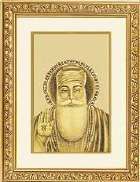 Adil Najam
Adil Najam
More than 10,000 Sikh yatrees from India, Europe and North America converged on Nankana Sahib on Sunday to celebrate the 538th birth anniversary of Guru Nanak, the founder of the Sikh religion, and the first of its ten Gurus. This was reportedly the largest Sikh gathering at Nankana Sahib since 1947.
Earlier in the week about 4000 pilgrims from India had arrived in Lahore on the train Samjhota Express to participate in the celebrations. Others arrived at Janam Isthan by the Amritsar-Nankana Punj Aab bus service. The pilgrims arrived at the Sacha Soda Gurdawara in 125 buses on Saturday morning and returned to Janam Isthan in the evening.
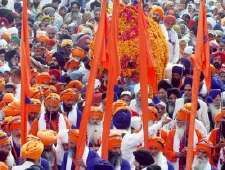
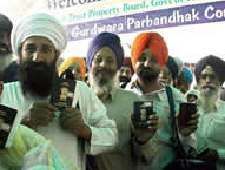
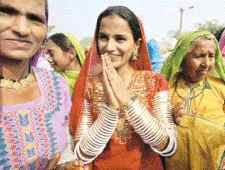
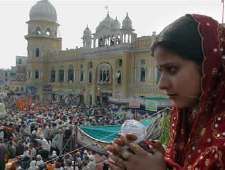
According to Amir Mir, writing in Gulf News (6 November, 2006):
Nankana Sahib, a sacred city for the Sikhs and located in the Pakistani province of Punjab, has come to life as nearly 10,000 Sikh pilgrims from India, Europe and America are attending the birth anniversary celebrations of Guru Nanak. According to the chairman of the Pakistan Gurdwara Parbhandak Committee (PGPC) Sardar Mustan Singh… in an unprecedented gesture of goodwill, the Pakistan government had issued visas to more than 10,000 Sikh pilgrims from India, Europe and America to visit Pakistan and participate in the three-day celebrations of the birth anniversary of the founder of the Sikh religion, Guru Nanak.
Sardar Mustan Singh said that free food is being provided to all the Sikh pilgrims and they have been provided accommodation by the Punjab government close to the Gurdwara Janam Asthan, the birthplace of Guru Nanak. The markets of Nankana Sahib have been specially decorated and special stalls were set up to feature traditional food and apparel and books and cassettes on Punjabi poetry and the Sikh religion.
Sikhs in other parts of Pakistan (see here for earlier post) also celebrated the occasion. For example, in Karachi, according to The News, “a large number of Sikh community members got together at Rama Sawami Temple, which is situated at M A Jinnah and performed their religious rituals there and at some other places like Ranchor Line and Kikri Ground.”



















































Very interesting post and informative. You do a service by collecting these legends and stories for us. Thanks to you and everyone who runs this website. I am always amazed at how much time and effort people put in there. And even then some people in comments can find nothing but fault. But please keep up the effort and know that you are making a difference though this website.
[…] For Sikhs, Hasan Abdal has special significance and a special place in their hearts. It houses the imprint of the hand or panja believed to be that of Guru Nanak, the founder of the Sikh religion. This makes Panja Sahib one of the three holiest shrines of Sikh religion – the other two being the Golden Temple in Amritsar, India and Nankana Sahib in Sheikhupura, Pakistan. Panja Sahib attracts thousands of Sikh devotees from all over the world every year on April 13. On this day in 1699, Guru Gobind Singh gave new guidelines and a new identity (Khalsa or the pure) to the Sikh religion at Anandpur during the Baisakhi (Spring) festival. […]
Hi Asif, I found some history on Nankana Sahib and other Gurdwaras nearby:
Nankana Sahib
Sikh history originates from Nankana Sahib. Guru Nanak Dev, the founder of Sikh faith, was born here in 1469. The name of the place at that time was Rai Bhoi di Talwandi. The landlord contemporary of Guru Nanak Dev was Rai Bular, who himself became a devotee of the Guru. It was renamed Nankana after the Guru. It is located in what is called Nilianwali Bar (forest where nilgais abound), and is about 75 kilometers west-southwest of Lahore. Nankana Sahib is in Sheikhupura district and is connected to the district town by rail and road. There are several shrines connected with the memory of Guru Nanak Dee’s childhood and early youth here. Later Guru Arjan dev and Guru Hargobirid also visited Nankana Sahib and a Gurdwara was also raised subsequently in their honor. During the Sikh rule, these gurdwaras were richly endowed with liberal land grants (over 7,000 hectares). The management was in the hands of Udasi and Nirmala priests until the Shiromani Gurdwara Parbandhak Committee took over during the Gurdwara Reform Movement of 1920-25. The Gurdwaras had to be abandoned in the aftermath of the Partition in 1947. They are now looked after by the Government of Pakistan. Nankana Sahib is one of the three places which can be visited periodically by bands of Sikh pilgrims with the approval of the Government of Pakistan, the other two being Panja Sahib near Hasan Abdal and Lahore. Since 1947 the traditional Sikh ardaas (supplicatory prayer) has been supplemented by a single sentence:
“O Merciful and Bounteous God, ever helpful to your Panth, do grant to your Khalsa Ji the boon of seeing, serving and protecting Gurdwaras at Nankana Sahib and other places from which the Panth has been separated.”
Gurudwara Janam Asthan:
This shrine representing the home of Baba Kalo and Mata Tripta, father and mother respectively of Guru Nanak Dev, where the Guru was born, was established by Baba Dharam Chand (1523-1618) son of Baba Lakhmi Das and grandson of Guru Nanak Dev. The shrine must have been established before the end of the sixteenth century because Guru Arjan Dev (1563-1606) is believed to have visited it. Its present building comprising a square, domed sanctum with a rectangular pavilion attached to it within a vast walled compound was built by Maharaja Ranjit Singh (1780-1839).
Several other buildings were added after the S.G.P.C. took over control on 21st February 1921, the day following the massacre of 150 to 200 Sikh pilgrims by assassins hired by Maharit Narain Das abetted by the British Commissioner of Lahore Division. The traditional fair to celebrate birth anniversary of Guru Nanak Dev continued with great eclat upto 1946, but since 1947 it has been a tame affair. In the beginning, the Pakistan government had permitted 15 Sikhs to stay at Nankana Sahib to carry out routine services at the shrine, but their number was reduced to a bare five in 1968 and still later to a solitary Granthi who maintains a token attendance with the help of some sahajdhari (unbaptised) Siridhi Sikhs. Thrice a year, on Baisakhi (April), death anniversary of Maharaja Ranjit Singh (June) and birth anniversary of Guru Nanak Dev (November), Pakistan government allows Sikh jathas, a few hundred strong each, to visit this and other shrines at Nankana Sahib, Panja Sahib and Lahore.
According to Waliullah Khan, Sikh Shrines in West Pakistan, there is a sacred relic, Chola Sahib, preserved here. It is a cloak with Quranic verses embroidered on it supposed to have been presented to Guru Nanak Dev by the ruler of Baghdad during the Guru’s visit to that city. If this is true (because our older sources do not make any mention of it), it is a fake relic, because Chola Sahib believed to be the real one is preserved at Dera Baba Nanak in Gurdaspur district of the Indian Punjab.
Gurdwara Patti Sahib,
Also called Gurudwara Maulvi Patti, lies midway between Gurudwara Janam Asthan and Gurudwara Bal Lila. It is along the road leading from Janam Asthan to the railway station. Patti means a wooden tablet on which young scholars practise writing. Hence the name of the shrine which represents the village school attended by Guru Nanak Dev. It is also said that young Nanak surprised his teacher by composing and reciting an acrostic, called patti, and that is why the shrine is called Patti Sahib or Maulvi Patti. The Gurudwara consists only of the sanctum in a small square domed room This Gurudwara is close to the Gurudwara Bal Lilah. Later on, he was sent to Pandit Brij Lal for learning Sanskrit. The place where education was important to Guru Nanak is known as Gurudwara Patti Sahib. This Gurdwara is close to the gurdwara Bal Lilah. At this site, Guru Nanak Dev Ji used to learn Devnagri. Later on, he was sent to Pandit Brij Lal for learning Sanskrit. At the age of 13, the Guru was sent to Maulvi Kutab-Ud-Din of Talwandi to learn Persian. But the wisdom and the spiritual enlightment of the Guru Nanak Dev urged all three of them to make obeiance before the Guru’s clear expressions of truth and wisdom. Guru Nanak while criticising the prevalent education system, enlightened them with the actual pupose of learning. He gave new meaning to each and every word. The Maulvis and the Pandits were quite ignorent about the mode of education. Guru Nanak was endowded with the wisdom from the very childhood. His composition in Sri Guru Granth Sahib known as Patti was written especially to remove the suspicious and doubts in the minds of the Pandits.
Gurdwara Kiara Sahib
Kiara means an agricultural field or plot. This Gurudwara is related to a miracle wrought by Guru Nanak Dev in his boyhood. It is situated east of the present town, near the railway station. It is said that the boy Nanak was once grazing cattle hereabout. While he sat absorbed in meditation, the cattle went into a nearby field and damaged the crop. The owner of the field complained to Rai Bular, who called Nanak for interrogation. The latter pleaded that no damage had been done to the crop. Rai Bular sent his men along with the complainant and the defendant to inspect the field in question. but to the discomfiture of the complainant farmer and to the surprise of everyone else, it was found that no damage whatsoever had been done. The building of this Gurudwara comprises a small, square, domed sanctum with a verandah all around it. This Gurudwara is situated at a distance of one and a half kilometers from Gurudwara Janam Asthan. According to Janam Sakhi, when Guru Nanak was yet a young man, he was to graze cattle. While resting underneath a shady tree, Guru Nanak was immersed in thoughts and the cattle went astray in the fields of a farmer. On having seen this, the peasant got red with rage. The clamoring made by the peasant disturbed the Guru from his trance. On beholding the Guru, he got embarrassed and made a complaint to Raj Bular. The Gurudwara drove the Cattle towards his house. On the return, the Guru just had a kind look at the field which turned green. By watching this miracle, the Hindus and the Muslims revered the Guru. This Gurudwara is situated in that historical field. The building is large.
A boundry wall and a sarovar has been got built around the whole field. Before obtaining the management of this Gurdwara by the panth in February 1921, a trio consisting of Mahant Fauja Singh, Mahant Ujjagar Singh and Mahantani Inder Kaur, was managing the affairs of this Gurdwara. After the partition of 1947, This Gurdwara came under the Pakistan Waqf Board and is continueing as such. The holy tank stands dry and Sri Guru Granth Sahib is not opened ceremoniously.
45 morabbas of land is endowed to the gurudwara in the village Daria.
Gurudwara Mal ji Sahib
is also near the railway station but closer to town. Mal (also called jal and van) is a shady tree. It is said that once as Rai Bular was riding among the fields in this area, he saw young Nanak sleeping in the shade of a mal tree. What struck Rai Bular was that the shade had not moved away from the sleeper as the movement and position of the Sun warranted. According to another version, the shade had moved away from the Guru but a large cobra had spread its huge hood over his face so that his sleep was not interrupted. This miracle and the incident related to Kiara Sahib convinced Rai Bular of the spiritual eminence of Guru Nanak Dev whose devotee he became. This Gurudwara, too, was first built by Diwan Kaura Mal and renovated by Maharaja Ranjit Singh. It is larger and more imposing than Kiara Sahib with its broad copings mounted with domelets around the central dome, domed kiosks at the corners of the roof and porches on the sides of the hall.This place is presently situated amidst the thick population of Nanakana Sahib. After partition, unfortunately, Sri Guru Granth Sahib has not been ceremoniously opened. Anyhow a portrait of the Guru is placed at the sanctum sanctorum, where the pilgrims pay a visit.This holy place is associated with the childhood activities of Guru Nanak Dev ji. One day while grazing the cattle, the Guru was taking rest under a shady tree. He went into trance. When the shadows were falling down, his divinely face happened to be covered with the sunshine. A big cobra spread its hood on the very face of the Guru for relieving him from the scorching heat. Rai Bular, the hakam of Talwandi saw this from a far off place. He got the impression that the child Guru Nanak was bitten by the snake. On approaching the the place, where the Guru Nanak was lying, the snake snailed to its pit. The Guru was awakened by the Rai Bular and he found him quite safe and sound. The Rai Bular, thus came to realise the divine personality of the Guru and became his disciple from that very day. He made it clear to Mehta Kalu that he should not take the former as merely his son but a revered holy prophet. A grant building stands erected to day at this historical site.
This place is presently situated amidst the thick population of Nankana Sahib. After partition, unfortunately, Sri Guru Granth Sahib has not been ceremoniously opened anyhow a portrait of the Guru is placed at the sanctorum, where the pilgrims pay a visit. A vana tree immortalises the historical place.
Gurudwara Tambu Sahib:
Once Guru Nanak’s father, Mahita Kalo, gave him some money and sent him to Chuharkana, a market town, to purchase merchandise. But the Guru spent all the money in feeding a band of ascetics and came back fully satisfied with what he had done. Only as he neared Taiwandi, did he realise the possibility of his father’s displeasure and rebuke. Hesitant to face his father’s ire, he hid himself under a large van tree whose branches touched the ground making it look like a tent (tamhu in Purijabi) until discovered and taken home. A Gurudwara was established near the tree, about a furlong east of Janam Asthan during the Sikh Rule in Punjab. Its present building comprises a double-storey domed sanctum in the middle of a square hall which has architectural embellishments similar to those of Gurudwara Mal Ji Sahib but lacks the porches covering its door fronts
A wild tree stands at this place. It is so old that its long branches touch the ground. It is a bit high at the centre. According to a Sikh legend, Guru Nanak rested for a while at this place, after returning from Chuharakana, performing the true business. The Guru had fed the hungry Sadhus with a sum of Rs.20/- obtained from his father. On knowing this, Mehta Kalu first felt annoyed with his son and afterwards brought him home.
On admonishing the son, the father received a reply that he had spent his money in the true business. On hearing of this incident, Raj Bular pleaded before Mehta Kalu by saying “Patwari Ji! Lest you chide the boy, let me make it clear to you that the whole City blessed by his grace and presence.” This shrine is situated at a distance of one Kilometer from Gurudwara Janam Asthan. Pilgrims feel it proud privilege to pay their homage.
Gurudwara Panjvin and Chhevin Patshahi, Nankana Sahib
Both of these historical shrines are situated near Tambo Sahib on the road leading towards Janamasthan Nankana Sahib. The shrine of Sat Gur Arjun Dev Ji is without a dome whereas the sacred shrine of the Patshah of meeri peeri Guru Hargobind has been built with dome and both the shrines have a common boundary wall.
The sixth Patshah came to visit Nankana Sahib in the month of Har Samvat 1670 (1613 AD) while returning from Kashmir. The Guru’s disciples established this Gur Mela at the site where he had stayed, 13 ghumaon of land is said to be endowed to the Gurdham. The tree under which Guru Dev Ji stayed, has withered away. A piece of that tree has been preserved in a glass case and placed inside the dome of the shrine of the 6th Guru so that the visiting Sangats may see it. Here too Prakash does not take place, only the buildings stand which the yatrees visit and get solace.
[quote comment=”7591″]But lets keep things in balance here. Lets move on beyond religion. Lets move on to the secular world of Pakistan where we speak in terms of Pakistan and not necessarily in terms of our religion. Lets put religion in private and not in public domain.[/quote]
Before we talk about balance is it right to look at it from minority side. I am no representative of minorities but I think its worth looking at these points and see what everyone thinks. Two points;
1. For all the mistreatment minorities have received (and possibly still receiving) often publicly, who is responsible? Obviously certain groups from majority. Would we simply move over ignoring this injustice without bringing the culprits to justice? Why should minorities agree to that?
2. We are fond of the two nations theory. Are minorities on the basis that they do not have the freedom to preach and often practice their religion and that they are discriminated against in jobs etc. are allowed to demand a separate homeland? Would the majority accept it? Why not, it is after all the basis of how Pakistan came about?
An idea. Please do a post on Nankana Sahib, its history and architecture. As a Pakistani I have alwasy known it was there. Maybe the most important religious location in the country (in terms of its importance to its religion), yet I know little else about it. A pity.